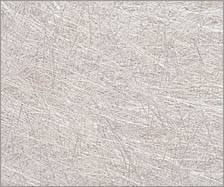
Fiberglass has a stigma of being tedious and difficult to work with. In reality, it is much easier to use than wood or metal, and requires only very simple tools to shape into any form required for your project. Its strength and durability makes it perfect for most projects, especially in the automotive field. The following general instructions can be used to make subwoofer enclosures, body panels, tanks, covers or anything else you can think of.
Make a mock-up of the desired finished part by either cutting and taping cardboard into a rough shape, or sculpting high-density foam until it resembles the product you're creating. Remember to account for the thickness laying fiberglass on the outside will add when shaping your part. The form doesn't have to be perfect. There will be plenty of opportunity for filing, sanding and shaping before moving on to paint.
Prepare the template to receive the fiberglass. Protect it by covering it in aluminum foil (masking tape works well to hold the foil in place). Make sure the foil is clinging tightly to the form, since the fiberglass will be taking this shape. To prevent the resin from sticking to the foil, thoroughly coat it with a spray-on mold release or a nonstick pan spray.
Lay the first layer of glass over the foil-covered form. Thoroughly coat the sheet of fiberglass in resin before applying, to ensure they dry as one solid piece. Use a roller to work out any air pockets or bubbles. When done, the sheet should be completely molded to the form, with no gaps or dead space. Only lay one layer of glass on the outside. Reinforcements will be made from the inside to prevent even more thickness from being added. Before moving on, allow the fiberglass to completely dry; this will take several hours.
Gently remove the delicate sheet of glass from the form, being careful not to bend, break or crack it. Lay several reinforcement sheets on the inside of the newly cast part. Though matting allows you to lay glass quicker, the first few layers should be regular fiberglass sheets, since they do a great job of curving around corners. Also, if there is a chance they might show after the outer layer is sanded, they are cosmetically superior to fiberglass mats. Run your roller over each layer, and allow each layer to dry before moving on to the next one.
The total number of layers will be determined by the stress that will be placed on the part. If you're making something simple and small, then a few layers would do. On the other hand, if you're making an auto body panel, you'll need many layers of fiberglass for strength.
Test fit your part once it has completely dried. It may need to be filed and sanded down to fit into place. A large metal file can be used to work through rough edges, followed by a rough grit sandpaper to remove more thickness. The visible surface of the part will need to be sanded down level, but at this point, it should still remain fairly rough for the finishing putty to stick to.
Smooth out the surface using an auto body putty such as Bondo. Once the putty dries, sand it using progressively finer paper, until you have a texture that is smooth and even to the touch, but still rough enough for paint to stick to. Auto body putty should only be used in thin layers to produce a paint-ready finish, so if you need to build the part up structurally, use a fiberglass reinforced putty instead. When finished, wipe the surface with rubbing alcohol to insure good adherence.
Begin priming with a spray can. Two thin coats are enough for most projects, and should be applied using long, even, sweeping motions on a horizontal plane. Allow the primer to completely dry, then move on to paint, using the same thin, even coats. Sometimes seven or eight coats may be required for complete coverage. Each coat doesn't have to completely dry before beginning the next one, it just has to set long enough to no longer be completely liquid. The final product can then be topped off with a coat of clear for protection.